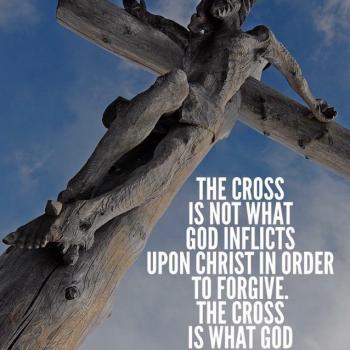 The last time my Sunday school class met, we discussed whether the language of “sacrifice” is essential to Christian thinking about the death of Jesus, or is a metaphor or illustration used in New Testament texts precisely because it related the death of Jesus to something familiar, helping people to make sense of it.
The last time my Sunday school class met, we discussed whether the language of “sacrifice” is essential to Christian thinking about the death of Jesus, or is a metaphor or illustration used in New Testament texts precisely because it related the death of Jesus to something familiar, helping people to make sense of it.
In Leviticus, it is not as though sacrifice is introduced as something which God demands. It is assumed that readers of the text (1) know what the sacrificial terms refer to, and (2) want to offer them already. And when we consider that along with the fact that essentially the same words for sacrifices are also used by Israel’s neighbors, it becomes clear that sacrifice in Leviticus is not to be viewed as a divinely-revealed innovation, but
The statement in Hebrews 9:22, quoted often by those with a particular interpretation of the death of Jesus, “without the shedding of blood there is no forgiveness,” can quite readily be understood as the author’s statement about the Law, and not about some eternal principle. Here is the entire verse:
In fact, the law requires that nearly everything be cleansed with blood, and without the shedding of blood there is no forgiveness.
Even just that immediate context suggests an alternative understanding to those who quote half of it as a memory verse.
In the Day of Atonement ritual, the blood was used to purify the earthly tabernacle, and later the temple, from the contamination of human sin and uncleanness, so that God could dwell in the midst of the people in the most holy place. Hebrews takes up that image, suggesting that Jesus’ blood purifies the celestial holy place of our sin so that Jesus can bring us into God’s presence.
Clearly this is metaphor. I have yet to meet someone who thinks that Jesus literally ascended to heaven with his blood and applied it to a literal sanctuary in the sky.
The heart of the image is about bringing human beings into God’s presence. It is about reconciliation.
Reconciliation is to the fore in 2 Corinthians 5, where the metaphors used are different from those in Hebrews. There it is the imagery of dying with Christ so as to share in new life with him that is to the fore. That too is metaphor. Paul says we are to consider ourselves dead to sin, and to offer ourselves as living sacrifices.
And so my own view is that the language and imagery of animal sacrifice can be set aside by contemporary Christians, as a formerly helpful explanation that today is itself in need of explanation. The point of the language can be spelled out in other terms, and it seems to me that Christians ought to be eager to do so.
Unless, perhaps, they live in a part of the world where animal sacrifice is still practiced and meaningful…













